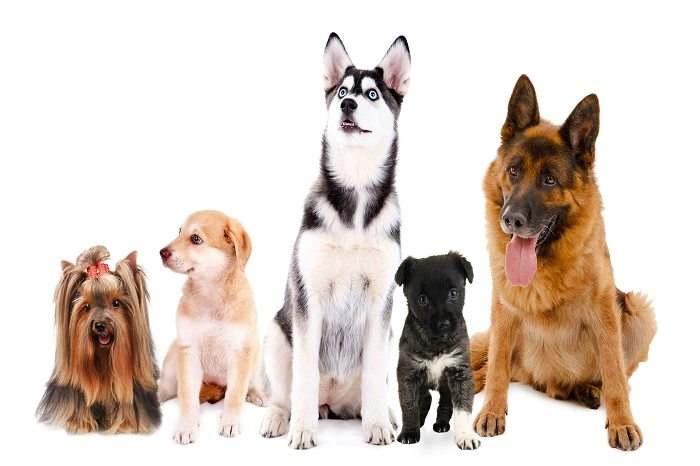1. German Shepherd
Also known as: Alsatian, German shepherd
2. Golden Retriever
Also known as: Yellow or Golden Retriever
3. Yorkshire Terrier
Also known as: Yorkie
4. Poodle
Also known as: Caniche, Pudel, duck dog
5. Beagle
Also Known as: English Beagle, Companion Dog, Hunting
One of mankind's best and closest friends is a dog. In this article, we'll talk about the Top 5 Cutest Dog in the World. Dogs are your playful friend who will stand by your side through thick and thin and defend your house.
In addition, their adorable nature is another factor in their popularity as pets. Dogs are the cutest pets you've ever seen, not just because of how they look but also because of what they do. You'll bring happiness to everyone you're around.
How do you decide which dog breeds are the cutest? Isn't that, after all, a question of opinion? A stunning coat, a cute face, and an aggressive spirit win out when it comes to appearance.
Some of the cutest dogs can be found by paying attention to which dogs are the most well-liked and which are most frequently featured in commercials, TV shows, or motion pictures. Certain dog breeds regularly win this beauty contest, even if everyone has a different idea of what is and isn't cute.
Top 5 cutest dog in the world
Top 5 cutest dog in the world are listed below
1. German Shepherd
Also known as: Alsatian, German shepherd
 The home's protector Another well-known dog breed for its sweet nature is the German shepherd. German shepherds got the name because they used to protect their master's goats and cattle in the past. They are easy to teach and highly lively. German Shepherds are known for their strength, intelligence, and loyalty. Another name for them is Alsatian.
The home's protector Another well-known dog breed for its sweet nature is the German shepherd. German shepherds got the name because they used to protect their master's goats and cattle in the past. They are easy to teach and highly lively. German Shepherds are known for their strength, intelligence, and loyalty. Another name for them is Alsatian.
German shepherd Traits
Breed Characteristics: These qualities are scored on a scale of 1 to 5, with 1 indicating the lowest link and 5 the highest. Recall that every dog is unique, and even dogs of the same breed may not display the same traits.
Bread Appearance: The German Shepherd dog breed conveys power and glory with its poised, gently pointed ears and penetrating dark eyes. But not all German Shepherds are commercial. When these dogs are enjoying adventures with their family or receiving appreciation for a job well done, their bushy, slightly bent tails wag back and forth. Well-bred German Shepherds have muscular frames that are longer than they are tall, with straight backs.
- Ears: Soft, floppy ears are born in German Shepherds. (With their ears down, they look so adorable!) Their ears start to get pointed by nature at about five months of age. When the German Shepherd stands at attention, the ears stand erect and open toward the front.
- Eyes: German Shepherd’s eyes have an eager and intelligent expression, and their shapes are black and almond-shaped.
- Nose: They typically have a long, straight muzzle and a square, mostly black nose.
- Height: Male: 24-26 inches, Female: 22-24 inches
- Coat length: The double coat of a German Shepherd is usually medium-length. Although some may be slightly wavy, the outer coat is normally dense and straight.
2. Golden Retriever
Also known as: Yellow or Golden Retriever
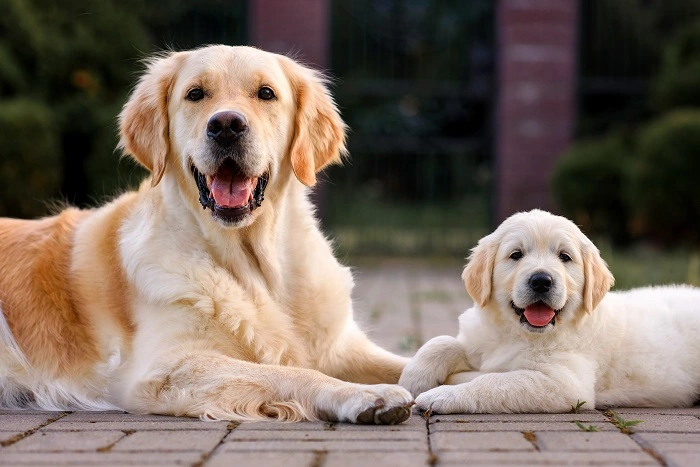 The medium-sized golden retriever is a Scottish retriever dog breed. Its beautiful golden coat and kind and loving disposition define it. It is one of the most often registered breeds in several Western countries and is kept as a pet regularly.The Golden Retriever is the cutest dog in the world 2024.
The medium-sized golden retriever is a Scottish retriever dog breed. Its beautiful golden coat and kind and loving disposition define it. It is one of the most often registered breeds in several Western countries and is kept as a pet regularly.The Golden Retriever is the cutest dog in the world 2024.
Golden Retriever Traits
Breed Characteristics: On a scale of 1 to 5, 1 indicating the lowest characteristic and 5 the highest, these qualities are scored. Recall that every dog is unique, and even dogs that belong to the cutest dog breeds that may not display the same traits. The Golden Retriever has the boo, the cutest dog in the world.
Bread Appearance: The expressive eyes of Golden Retrievers express their kind nature. Their plumed tails waggle happily, and their noses always sniff out the next adventure as they proudly carry themselves. Their coats are covered in feathers ranging from pale to dark gold. Some Golden’s get a white-golden hue as they age, especially around their adorable faces.
- Ears: The floppy ears of golden retrievers hide ear canals. They usually have a soft V shape.
- Eyes: Their eyes are medium to dark brown and have a smart and friendly look.
- Nose:Typically, they have brown or black noses. Their nose may become pink due to a harmless phenomenoncalled "snow nose," where the pigment disappears in cold weather.
- Height: Male; 23-24 inches, Female; 21.5-22.5 inches
- Coat length: The medium-length double coat of golden retrievers consists of two layers: a thick, water-resistant outer coat and a soft, warm undercoat. Typically, their bellies, tails, and feet are thickly feathery.
3. Yorkshire Terrier
Also known as: Yorkie
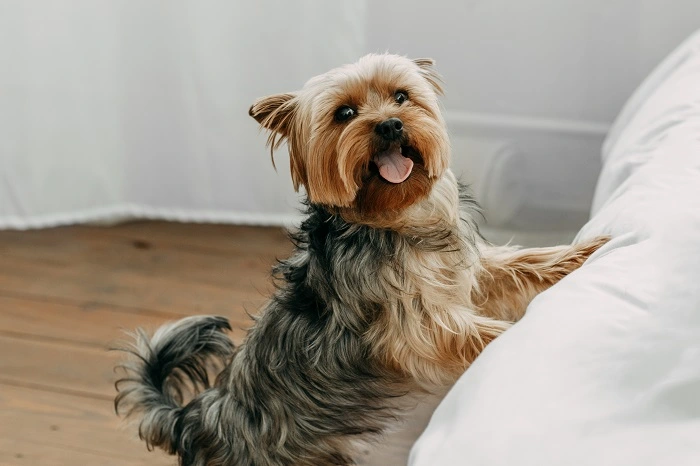 The Yorkshire Terrier, commonly known as the Yorkie, is a small but energetic toy breed prized for its confident character and long, silky coat. It is a well-liked companion dog, intelligent, loyal, and has a lot of attitude for a lapdog.
The Yorkshire Terrier, commonly known as the Yorkie, is a small but energetic toy breed prized for its confident character and long, silky coat. It is a well-liked companion dog, intelligent, loyal, and has a lot of attitude for a lapdog.
Yorkshire Terrier Traits
Breed Characteristics: On a scale of 1 paw (low) to 5 paws (high), these are the traits you should look for in a Yorkshire Terrier. Just remember that every dog is unique and that not all dogs, even those of the same breed, will be the same.
Breed Appearance: One of those canine breeds that make almost anyone yelp is the Yorkshire Terrier. They're just too adorable! Yorkies have round eyes, soft hair, teddy bear faces, and small bodies that make them resemble stuffed animals come to life. Although having mainly black hair at birth, as they get older, their coat becomes increasingly gray and golden (referred to as "blue"). Some Yorkie parents keep their golden locks short, while others let them grow long. In either case, your Yorkshire Terrier will reflect cuteness.
- Ears: The lively, little v-shaped ears that characterize the Yorkshire Terrier are set on their heads like little flags.
- Eyes: Dark-colored Yorkshire Terrier eyes are believed to shine with a sensitive, keen attitude.
- Nose: Yorkies with button noses in black.
- Height: Male: 7-8 inches, Female: 7-8 inches
- Coat length: The floor-length hair of a Yorkshire Terrier may grow to looklike human hair.
4. Poodle
Also known as: Caniche, Pudel, duck dog
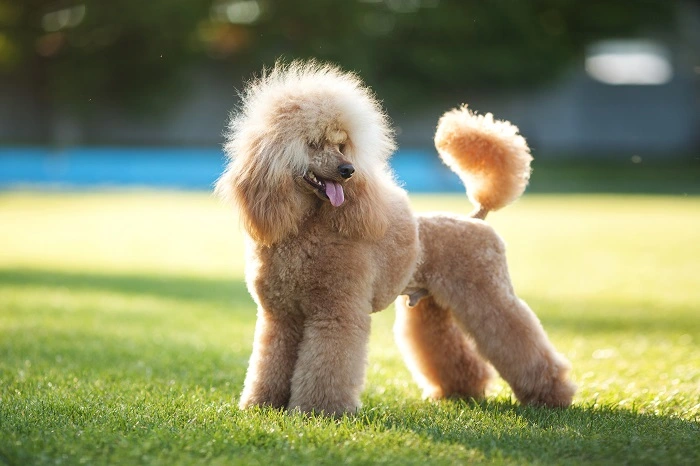 Poodles love to focus and mental stimulation; they are as elegant as mental. With coats that are easy on allergy sufferers and available in various sizes, they are perfect companions for a wide range of lifestyles.
Poodles love to focus and mental stimulation; they are as elegant as mental. With coats that are easy on allergy sufferers and available in various sizes, they are perfect companions for a wide range of lifestyles.
Poodle Traits
Breed Characteristics: On a scale of 1 to 5, 1 representing the lowest attribute and 5 the highest, these qualities are achieved. Recall that every dog is special; even dogs of the same breed may not display the same traits.
Breed Appearance: The three sizes of poodles are standard, which is a fairly large dog; miniature, which is a small dog; and toy, which is an extremely tiny dog. The Poodle has the cutest dog breeds, and it is small. The differences in height are as follows: Standing more than 15 inches tall at the shoulder, Standard Poodles are considered large-breed dogs. At the shoulder, miniature poodles stand less than 15 inches tall.
The shoulder lengthof a Toy Poodle, a small dog breed, can reach no more than 10 inches. They all follow the same breed standard, which is another way of saying that they all have the same appearance, regardless of size.
They are proportionate in both height and weight. Additionally, they can all be trained in the same imaginative methods.
- Ears: Poodle ears are long, lowered, and at or below eye level.
- Eyes: They have round, black eyes.
- Nose: Their noses are sharp and long.
- Height: Standard: Over 15 inches, Miniature: 10-15 inches, Toy: no more than 10 inches
- Coat length: The dense, curly coat of a Poodle dog is often clipped short.
5. Beagle
Also Known as: English Beagle, Companion Dog, Hunting
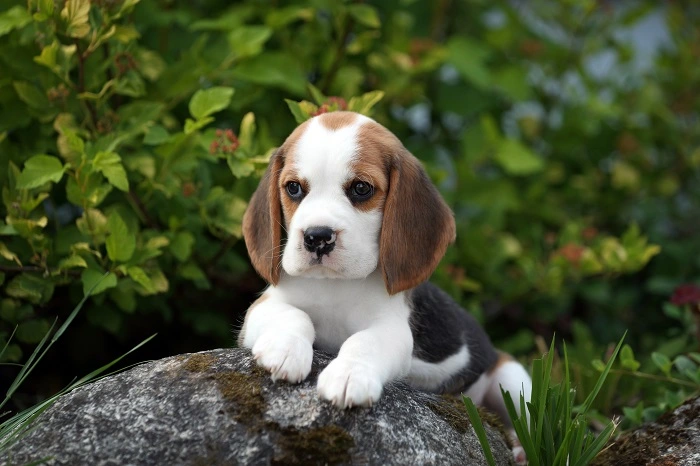 Beagles are small, social dogs that love company and exercise. Their remarkable sense of smell and welcoming nature make them great household friends. They are perfect for anyone looking for an active, fun dog friend who will thrive on affection and outdoor experiences.
Beagles are small, social dogs that love company and exercise. Their remarkable sense of smell and welcoming nature make them great household friends. They are perfect for anyone looking for an active, fun dog friend who will thrive on affection and outdoor experiences.
Beagle Traits
Beagle Characteristics: On a scale of 1 paw (low) to 5 paws (high), you should prepare to have these characteristics when raising a Beagle. Several pet professionals reviewed these qualities, including behaviorists, veterinarians, and dog trainer trainers. Just remember that every dog is unique and that not all dogs, even those of the same breed, will be the same.
Beagle Appearance: Beagles are little hound dogs with long, floppy ears, a high tail, and a short, muscular build. Their expression is a tender, requesting look that perfectly captures the essence of "puppy dog eyes."
- Ears: Beagle ears droop low to the ground.
- Eyes: Their large, kind, or requesting eyes can be brown or hazel.
- Nose: Beagle nose pigments vary in color from dark to light, and their nostrils are large and open.
- Height: 13 inches & under, 13-15 inches
- Coat length: Their coats are dense, tightly fitted, and medium.
How to Care for a Beagle?
Beagles enjoy having a good time. Raising a Beagle may be enjoyable and fulfilling, even though it may occasionally result in your dog acting a little naughty. Beagles serve as an introduction to the fundamentals of taking care of this loving and affectionate breed.
How can we improve the Health of dogs as they grow?
- Nutritional Needs
Your puppy's nutritional needs will change greatly as it ages. Puppies develop quickly, making them extremely energetic and hungry almost always. They require regular feedings, and they almost always take their entire meal.
Puppy food is designed to satisfy the increased caloric needs and support this fast-growingstage. But a dog's nutritional needs change as their growth slows. They don't require as much food, nor do they need to have as many calories.
Ensure the food you provide your dog suits their breed and age. For example, larger dog breeds require less protein in their diet while they are puppies. Overeating in protein leads to excessive development, promoting adult-onset arthritis. You can get breed-specific feeding advice from the veterinarian because not all meals are equal.
- Dental Care
Dogs have baby teeth, just like us. During the first year of life, dogs acquire permanent teeth. Therefore, dental health is crucial to their well-being. Many dog owners do not know how important it is to clean their teeth, but with a little preventative care, you can avoid costly illnesses, bad breath, and tooth pain.
Create a brushing routine early on. Use the toothbrush once a week, or even once you brush your dog, to help eliminate buildup. In this manner, your dog develops the habit of sitting for brushing at a young age.
- Behavioral Challenges
A behavioral shift is another indication that you are maturing. However, puppies' clumsiness, harm, and playfulness are eager to please and readily trained when misbehaving. But as kids get closer to adulthood, they could exhibit a more forceful side as they strive for greater freedom.
This is the moment to take charge of the relationship and establish dominance. During this period, curb even the smallest displays of anger, like yelling and barking, that show what is and is not appropriate. Use this as an opportunity to teach your puppy that some behaviors, like jumping up on humans and being possessive of food or toys, are never healthy.
FAQs
Q. Do Beagles bark a lot?
Beagles are known for barking and howling to express themselves. Keeping your Beagle busy and getting enough exercise is the best way to reduce their vocalizations. You can also train them to learn “quiet” as a command, but controlling their environment will help (not leaving them alone in the yard for long periods, etc.)
Q. Are Poodles hypoallergenic?
Yes, Poodles are considered hypoallergenic, making them a popular dog for pet owners with allergies.
Q. Are German Shepherds good with kids?
German Shepherds are good with kids if they are properly trained and socialized. Also, be sure children are taught the proper ways to engage with dogs, including not invading their space unless they ask first.
